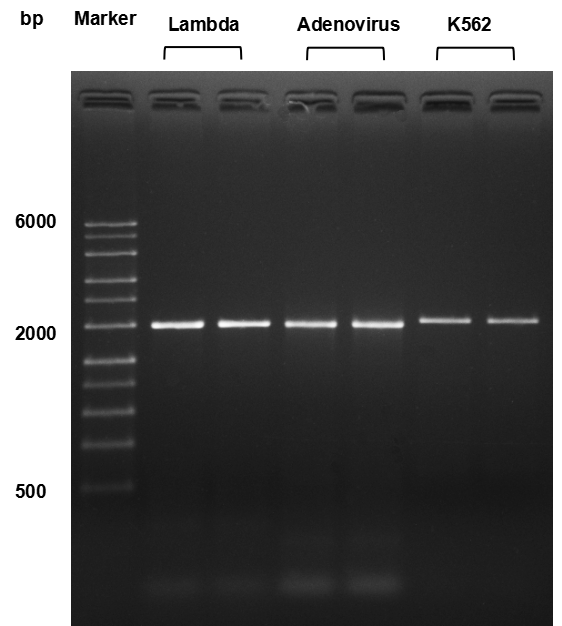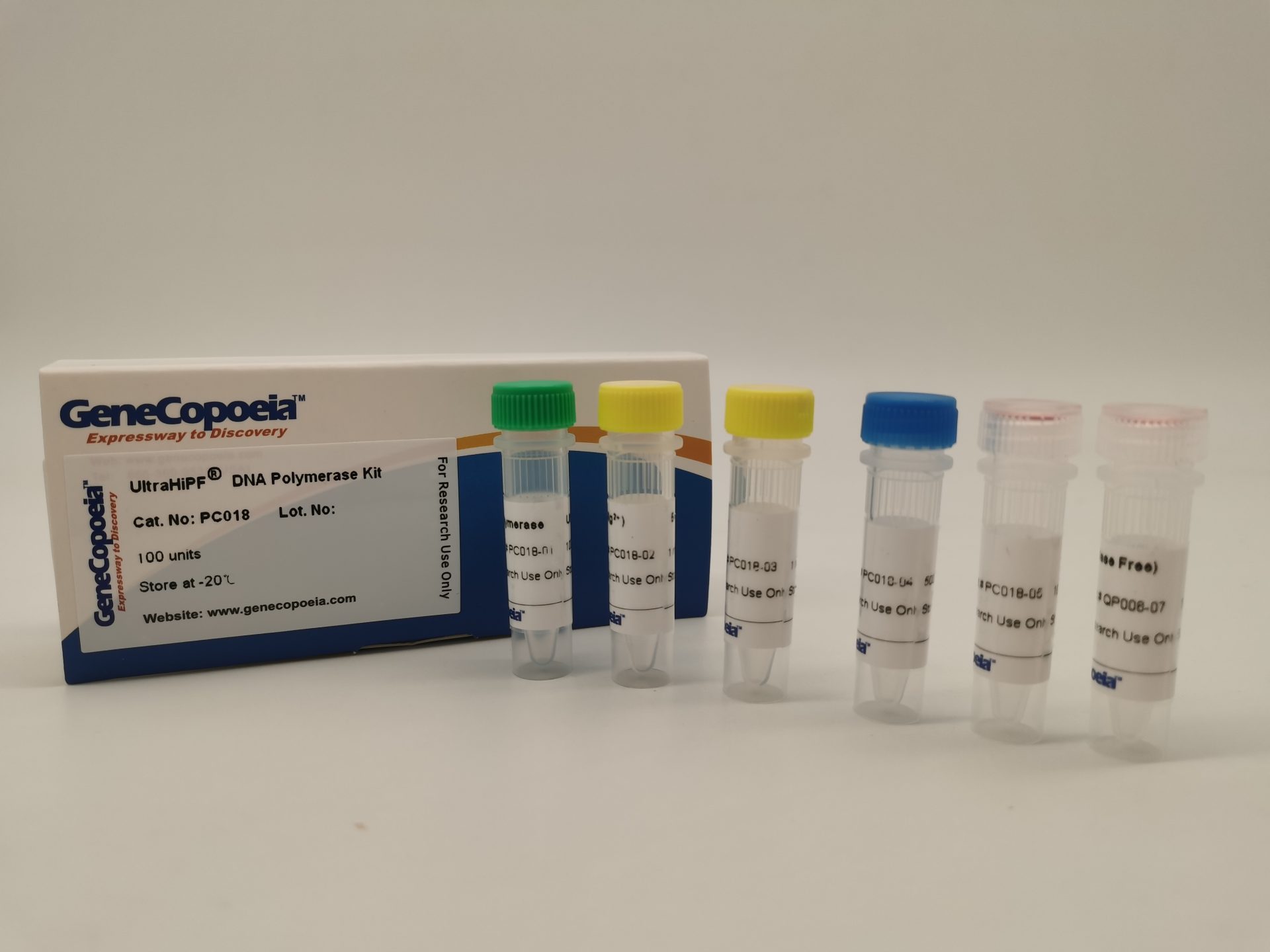Product Information
UltraHiPF® DNA Polymerase is a heat-resistant ultra-fidelity DNA polymerase with 5′-3′ polymerase activity and 3′-5′ exonuclease activity. The polymerase can amplify uracil- and hypoxanthine- containing templates, GC- or AT- rich templates, genomes as low as one copy, and DNA fragments of more than 12 kb from different species. UltraHiPF® DNA Polymerase can specifically amplify 2 kb fragments at 1sec denaturation, annealing, and elongation, and can expand complex templates at 15-30 sec/kb. With Sanger sequencing, the mutation rate of this enzyme was 55 times lower than that of Taq DNA polymerase. The PCR product obtained by using the product has the Blunt-end.
Advantages
- 55X higher fidelity than Taq
- Robust Reactions – maximal success with minimal optimization
- Most templates can be expanded up to 0.5 sec/kb
- Superior performance for a broad range of amplicons
Performance Data
Uracil and hypoxanthine amplification function

Figure 1. Using Lambda DNA as template and adding 0.2mM dUTP, UltraHiPF DNA Polymerase was used to amplify the 2 kb target fragment. Then uracil-DNA glycosylase (UDG) was treated at 37℃ for 1 h followed by agarose gel electrophoresis.
High expansion rate

Figure 2. Using UltraHiPF DNA Polymerase to amplify the 2 kb fragments of Lambda DNA, Adenovirus DNA and K562 genome. The denaturation, annealing and elongation times of the program were set to 1 second.
High fidelity

Figure 3. Using UltraHiPF DNA Polymerase, V Competitor, and N Competitor DNA Polymerasee to amplifythe same 2.5Kb fragment LacIOZa template. Cloning products were used for Sanger sequencing.
Wide GC template amplification performance

Figure 4. Using UltraHiPF DNA Polymerase, V Competitor, and N Competitor DNA Polymerasee to amplify the K562 genome template with 25% to 84% GC.
Repeat sequence amplification performance

Figure 5. Using UltraHiPF DNA Polymerase, V Competitor, and N Competitor DNA Polymerasee to amplify the plasmid templates of MPRM34109 and EBNA-1(YP_401677.1)
Different length amplification performance

Figure 6. Using Lambda DNA, Adenovirus DNA and K562 genomes as templates, UltraHiPF DNA Polymerasee, V Competitor and N competitor DNA Polymerase were used to amplify the target fragments of 2kb, 5kb, 8kb and 12kb.
Exceptional DNA template sensitivity









